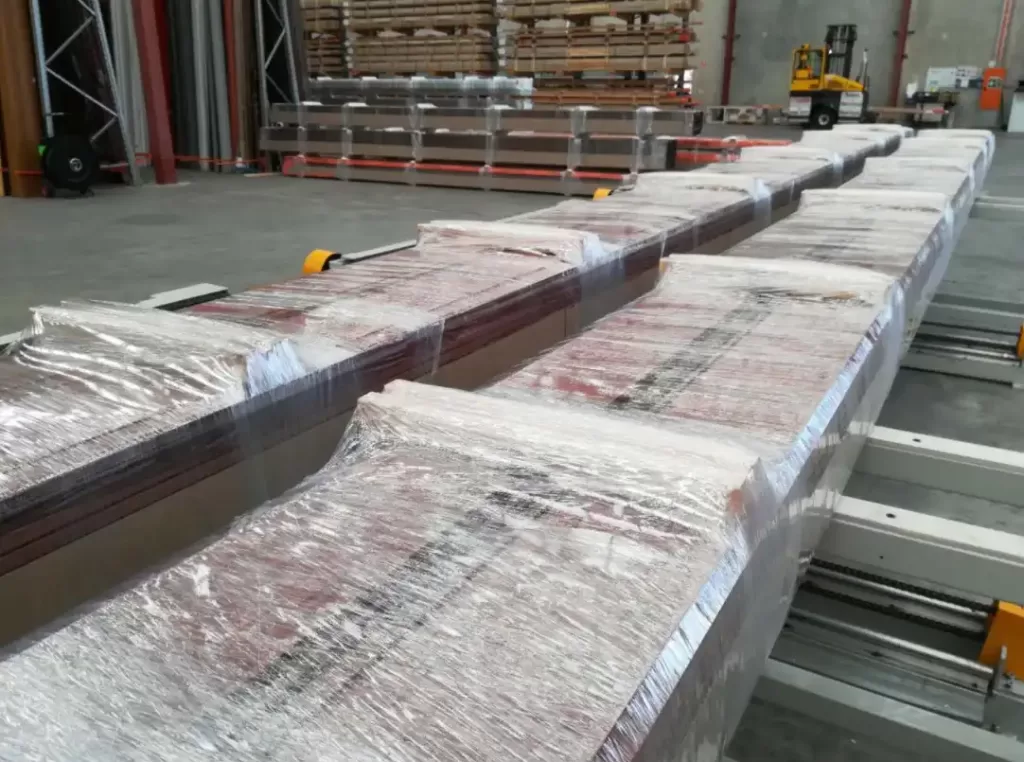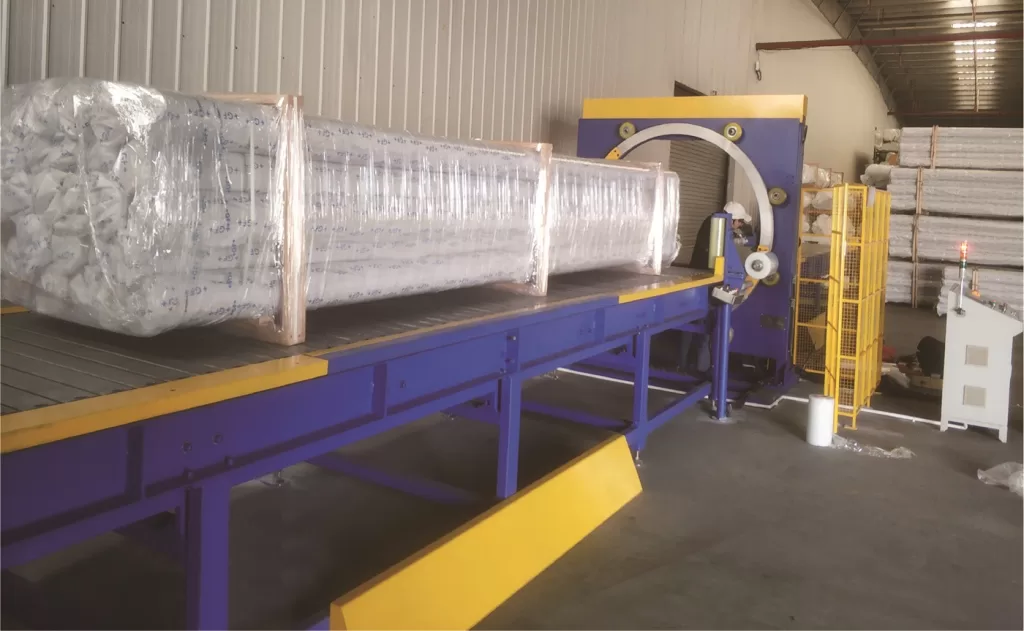Enhancing Packaging Efficiency: A Guide to Automatic Stretch Wrappers
Manual stretch wrapping is often a bottleneck in packaging operations. It can be time-consuming, physically demanding, and lead to inconsistent load containment, potentially resulting in product damage during transit. Automatic stretch wrappers offer a robust solution, significantly improving speed, consistency, and safety on the packaging line. Two prevalent types dominate the industrial landscape: horizontal orbital stretch wrappers and turntable stretch wrappers.
Understanding Horizontal Orbital Stretch Wrappers
Horizontal orbital stretch wrappers are specifically designed to bundle and secure products that are typically long, bulky, or unwieldy.
- How They Work: The product passes horizontally through a rotating ring carrying the stretch film roll. The ring orbits around the product, dispensing the film and effectively bundling items together or overwrapping single long items.
- Ideal Applications: Suited for materials like pipes, lumber, aluminum extrusions, tubing, bundles of rods, doors, windows, and assembled furniture.
- Key Benefits: Provides tight, secure wrapping for elongated items, preventing shifting and protecting surfaces. Automation allows for continuous operation at high speeds, boosting throughput for suitable product profiles.
(Imagine an image here: A horizontal orbital wrapper in action, bundling metal pipes)
alt="Horizontal orbital stretch wrapper securing a bundle of long metal pipes"
Exploring Turntable Stretch Wrappers
Turntable stretch wrappers are versatile machines commonly used for palletized loads or larger, more conventionally shaped items.
- How They Work: The load (often on a pallet) is placed onto a rotating platform (turntable). As the turntable spins, a film delivery system moves vertically up and down a mast, dispensing stretch film to cover the entire load.
- Ideal Applications: Palletized goods, boxes, drums, irregularly shaped large items that can be stabilized on a pallet or the turntable. Effective for heavier and bulkier products.
- Key Benefits: Delivers complete, 360-degree wrapping coverage for excellent load stability and protection. Automation ensures consistent film tension and overlap, optimizing material usage and securing loads effectively.
(Imagine an image here: A turntable wrapper securing a pallet load of boxes)
`alt="Turntable automatic stretch wrapper securing a pallet load of stacked boxes"

Key Advantages of Automating Stretch Wrapping
Transitioning from manual to automatic wrapping, whether orbital or turntable, yields significant operational benefits:
- Improved Throughput and Efficiency: Automatic wrappers operate much faster than manual methods, drastically reducing wrapping cycle times and increasing the number of loads processed per hour. This directly translates to higher packaging line output with reduced labor requirements per load.
- Enhanced Load Containment and Product Protection: Automation ensures consistent application of stretch film with precise tension control and overlap. This creates a stable, secure load that is less susceptible to shifting and damage during handling and shipping, reducing costly returns and rework.
- Material Cost Savings: Automatic wrappers are designed to pre-stretch film significantly (often over 200%), maximizing yield from each roll. Consistent application eliminates the excessive film use often seen in manual wrapping, leading to substantial reductions in consumable costs and waste.
- Increased Workplace Safety: Automating the wrapping process eliminates the need for operators to manually walk around loads while bending and stretching, significantly reducing the risk of musculoskeletal injuries, dizziness, and fatigue associated with manual wrapping. This contributes to a safer work environment and can lower workers' compensation claims.
Selecting the Right Automatic Wrapper for Your Operation
Choosing between a horizontal orbital and a turntable wrapper depends primarily on your specific application:
- Product Profile: Are you wrapping long, thin items (orbital) or palletized/bulky items (turntable)?
- Product Dimensions & Weight: Consider the maximum size and weight capacity of the machine.
- Throughput Needs: How many items or pallets per hour do you need to wrap? Different models offer varying speeds.
- Integration: How will the wrapper fit into your existing production or packaging line? Consider upstream and downstream processes.
- Budget: Automatic wrappers represent an investment; factor in the total cost of ownership, including maintenance and consumables.
Generally:
- Choose Horizontal Orbital for: Pipes, extrusions, lumber, doors, windows, bundled long items.
- Choose Turntable for: Pallet loads, boxes, drums, large irregular items that fit on the platform.
Integrating Automatic Wrappers into Your Packing Line
Successful implementation requires careful planning:
- Layout: Ensure sufficient space for the machine footprint, operator access, and product flow (infeed and outfeed conveyors).
- Connectivity: Consider integration with existing conveyor systems and potentially plant-wide automation controls.
- Maintenance: Understand the preventative maintenance schedule to ensure longevity and minimal downtime. Consult manufacturer recommendations and potentially explore resources from industry bodies like the Packaging Machinery Manufacturers Institute (PMMI) for best practices.
- Safety: Ensure all safety guarding, emergency stops, and operator training protocols are in place, adhering to standards like those from OSHA.

1horizontal wrapping machine gg1500 ce approved convey Conclusion
Automatic stretch wrappers, including both horizontal orbital and turntable models, are essential tools for optimizing modern packaging operations. By automating this critical step, fabrication and manufacturing facilities can achieve significant gains in efficiency, reduce packaging costs through optimized film usage, improve product protection during transit, and create a safer working environment for employees. Carefully evaluating your specific needs will guide you to the right type of automatic wrapper, positioning your operation for enhanced productivity and reliability.
